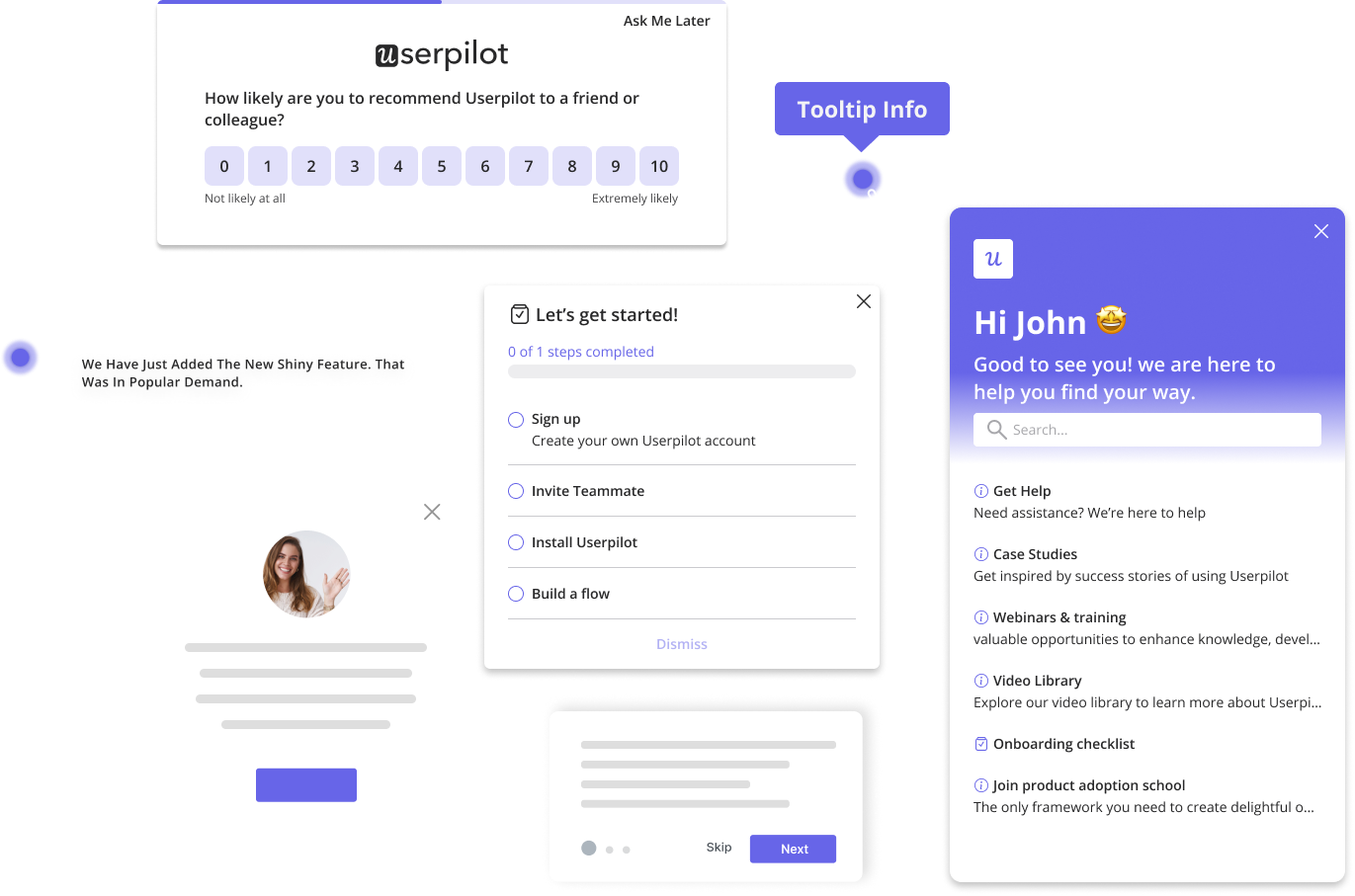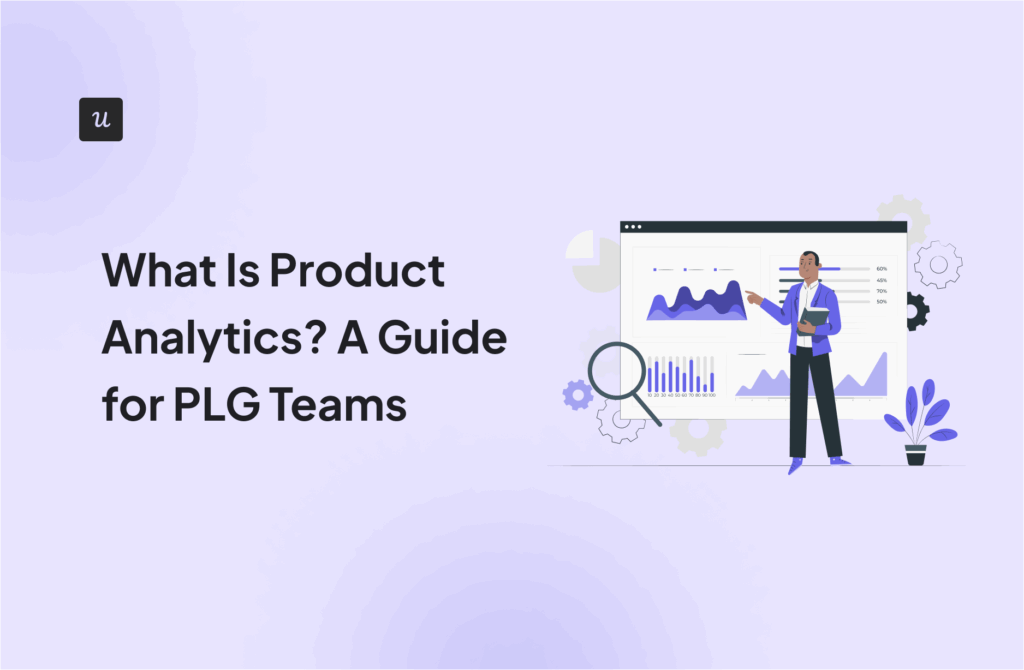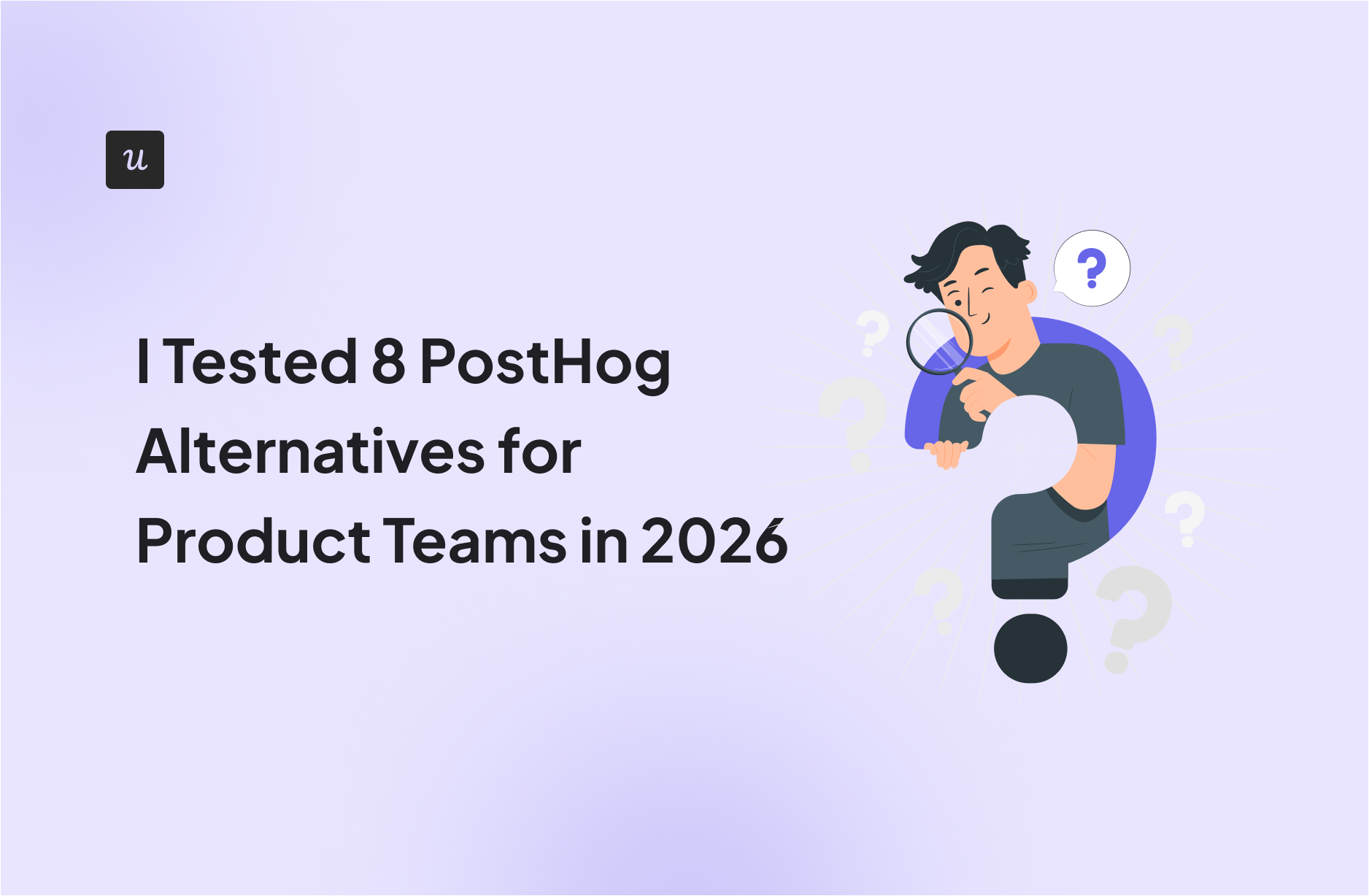
As a product manager, I know the struggle of choosing the right analytics software. We’re constantly looking for solutions that help us understand user behavior, drive adoption, and ultimately, build better products.
PostHog, with its all-in-one approach to product analytics, session replay, and feature flags, often comes up in conversations.
It’s a powerful tool, especially for engineering-heavy teams that appreciate its open-source nature and self-hosting options. However, from my experience, “all-in-one” doesn’t always mean “best-in-class” for every single feature.
In this guide, I’ll break down some of the most popular PostHog alternatives, comparing their strengths, weaknesses, and what kind of team they’re best suited for.
What’s the main frustration driving you to look for PostHog alternatives?
What’s your primary goal right now?
Stop just tracking. Start acting.
You’ve seen what’s wrong, now it’s time to fix it. Many PostHog alternatives are great for finding problems, but Userpilot is built to solve them.
Combine powerful, no-code analytics with in-app engagement tools (like onboarding flows, tooltips, and surveys) to close the loop and drive user adoption.
Why seek a PostHog alternative?
PostHog is a robust, open-source platform, but it has its trade-offs. Here’s what I often hear, and what I’ve seen myself, that prompts teams to look elsewhere:
- Overwhelming complexity & UX: For teams without dedicated data analysts or a large engineering team, PostHog’s interface can feel overwhelming, demanding more time and technical skill for setup and reporting.
- Incomplete data collection: Because client-side tracking can be blocked by ad software, PostHog might miss a meaningful portion of event data unless you switch to server-side or proxy tracking. This can skew how you interpret real user behavior.
- High self-hosting overhead: While self-hosting offers control, it demands substantial engineering resources for setup, maintenance, scaling, and security, often trading a SaaS fee for high internal engineering costs.
- Limited specialized depth: While it covers many areas, some of its tools, like A/B testing or session replay, might not offer the same depth or specialized features as dedicated platforms.
- Unpredictable scaling costs: PostHog’s usage-based pricing can lead to unexpected expenses as your product grows and event volume skyrockets.
These pain points highlight the need for PostHog alternatives that offer either simpler usability, more specialized capabilities, or a more predictable cost structure.
Try Userpilot Now
See Why 1,000+ Teams Choose Userpilot
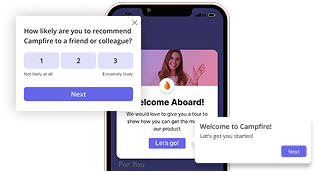
Top PostHog competitors in detailed comparisons
Let’s start with a side-by-side overview of all the PostHog alternatives I’ll be covering in this blog post:
| Tool | Best For | Outstanding Features Compared to PostHog | Pricing | G2 Rating |
|---|---|---|---|---|
| Userpilot | Growth & product teams wanting analytics + in-app action. | Combines analytics with built-in in-app engagement; no-code flows, user surveys, session replay. | Starts ~US $299/month for smaller teams. | ~4.6 / 5 |
| Amplitude | Large product teams focused on predictive & retention. | Advanced retention analysis, predictive cohorts, statistical significance testing. | Free starter tier; paid plans from $49/month; custom pricing thereafter. | ~4.5 / 5 |
| Mixpanel | Cross-functional teams owning metrics & events. | Deep event-tracking, segmentation, user/corporate metrics ownership. | Free tier available; custom pricing thereafter. | ~4.6 / 5 |
| Heap | Teams wanting full retroactive capture with minimal setup. | Full autocapture of events, visual tagging, path analysis with less upfront instrumentation. | Free plan up to ~10 K sessions/month; custom paid plans from there. | ~4.4 / 5 |
| LogRocket | Engineering/support teams focused on debugging & performance. | Session replay combined with console logs, network requests, real-user sessions → strong dev focus. | Free tier available; paid plans start from $69/month. | ~4.6 / 5 |
| FullStory | UX/Customer experience teams. | Strong digital experience intelligence: heatmaps, frustration signals, session replays with UX focus. | Custom pricing only (contact sales). | ~4.5 / 5 |
| Plausible | Privacy-conscious website teams. | Lightweight, cookie-free web analytics; simpler than full-blown product analytics platforms. | From ~$9/month; self-hosted open source option. | ~4.8 / 5 |
| Statsig | Engineering-led teams doing feature releases & experimentation. | Unlimited feature flags, warehouse-native experimentation, usage-based pricing scales. | Free tier includes analytics + flags; enterprise custom. | ~4.7 / 5 |
1. Userpilot – No-code product analytics with in-app engagement layers
I’m starting with Userpilot because it offers a truly comprehensive suite for product growth.
With its intuitive product analytics features, it’s not just a platform for tracking numbers but also a space where analytics, in-app guidance, and feedback come together.
Userpilot lets you track behavior, analyze trends, and instantly act on those insights through modals, tooltips, and other in-app elements. It’s built so that literally anyone on your team (with or without technical expertise) can find insights, launch user surveys, or design contextual experiences.
To me, that’s the real differentiator. While PostHog offers in-depth analytics, Userpilot lets you close the loop by driving user engagement directly within your product.
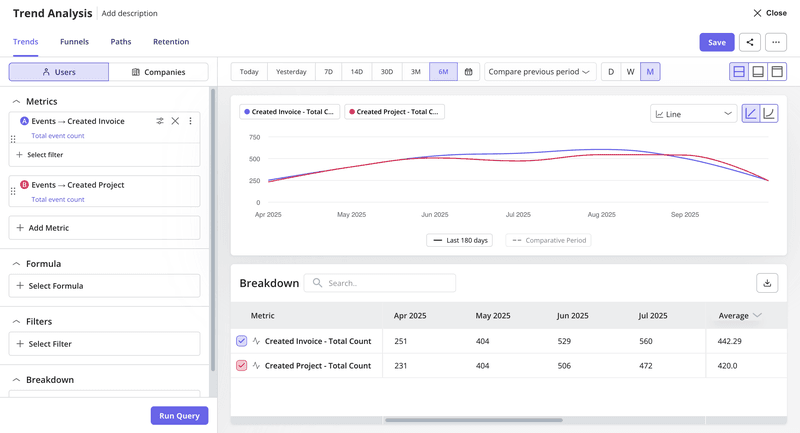
Userpilot vs PostHog side-by-side comparison
| Features | Userpilot | PostHog |
|---|---|---|
| Product analytics | ✔ | ✔ |
| Autocapture | ✔ | ✔ |
| Session replay | ✔ | ✔ |
| Core charts (funnels, trends, paths, retention cohorts) | ✔ | ✔ |
| User/Company profiles | ✔ With sessions, top events, survey answers and sentiment data | ✖ |
| Feature flags | ✖ | ✔ |
| A/B testing | ✔ (flows only) | ✔ |
| SQL access | ✖ (data export only) | ✔ |
| Open source | ✖ | ✔ |
| In-app engagement for both mobile and web apps (tooltips, modal, slideout, etc.) | ✔ | ✖ |
Why it’s a good PostHog alternative:
If you’ve ever wished your analytics tool could do more than just tell you what’s happening, Userpilot is just for that.
You get the core product analytics features you’d expect from PostHog, but with built-in tools that let you act on the data immediately.
For example, if you want to compare trends for a custom period, that’s just a few clicks in Userpilot. In PostHog, you’ll need SQL. You can also drill down using custom properties without engineering help.

And because Userpilot combines analytics with in-app engagement, you can guide users toward key features, test improvements through flows, and trigger automated insights to optimize adoption. All without any dev time.
Take Amplemarket’s story as an example. Their product team replaced PostHog with Userpilot to bring together analytics, feedback, and engagement in one place. Within weeks, they had:
- Boosted feature adoption by 5–10x using in-app tooltips and guides.
- Cut event setup time from 2 weeks to 5 minutes with no-code tracking.
- Used session replays and feedback surveys to spot friction instantly.
As Awni Shamah, their Staff Product Manager, put it:
“The thing that clicked for stakeholders was that Userpilot is an all-in-one solution..The no-code event tracking was a huge ‘aha!’ moment… It made our product designers 80-90% more confident in developing new solutions.
We’re now also taking things a step further by adding an AI layer on top of Userpilot’s analytics capabilities. You can ask questions, dig deeper into your product data, and find insights instantly without the need for SQL or complex filtering. It will really help summarize behavior, flag anomalies, suggest segments, and spot opportunities to improve adoption.
If you’d like to try it out before everyone else, you can join the beta waitlist here.
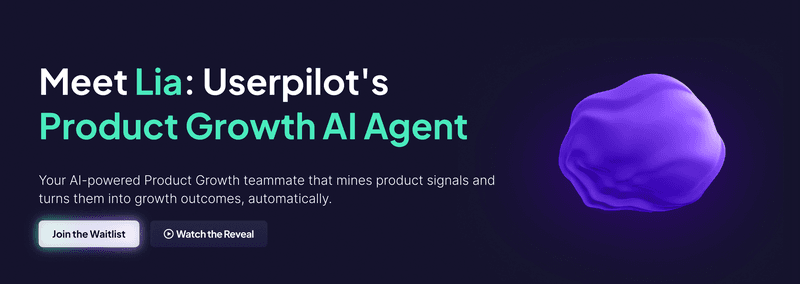
2. Amplitude – Product analytics with predictive insights
Amplitude is another top-tier PostHog competitor designed for product growth. It feels more structured than PostHog, with a strong focus on long-term user behavior, customer retention, and lifecycle analysis.
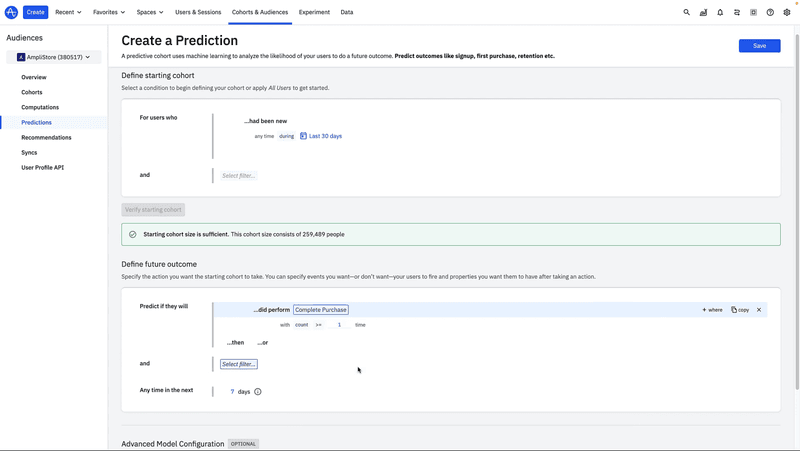
Nevertheless, Amplitude’s pricing can be less transparent and often higher, especially for advanced features, compared to PostHog’s generous free tier and clear usage-based model.
Amplitude vs PostHog side-by-side comparison
| Features | Amplitude | PostHog |
|---|---|---|
| Product analytics | ✔ | ✔ |
| Autocapture | ✔ | ✔ |
| Core charts (funnels, trends, paths, retention cohorts) | ✔ | ✔ |
| Predictive cohorts | ✔ | ✖ |
| Session replay | ✔ | ✔ |
| Heatmaps (click/scroll) | ✔ | ✔ |
| SQL query | ✔ | ✔ |
| Impact analysis (causal-style feature effect readout) | ✔ | ✖ |
Why it’s a good PostHog alternative:
In my experience, Amplitude just feels more built for scale. When you’re dealing with complex products, multiple funnels, or countless custom events, it gives you the structure that PostHog sometimes lacks.
You can easily visualize conversion funnels, dig into retention analysis, and explore user paths without spending hours on setup. What I really like is how its predictive insights and statistical significance testing help you see not just what users did, but why it mattered.
If your product has millions of monthly active users and you’re serious about making smarter, data-backed decisions, Amplitude is the more mature, reliable choice.
3. Mixpanel – Event-driven analytics for growth teams
Mixpanel has been a longtime player in product analytics, known for its focus on event analytics and deep segmentation. It relies heavily on manual event instrumentation, which can be a drawback if you prefer autocapture (although it does offer autocapture).
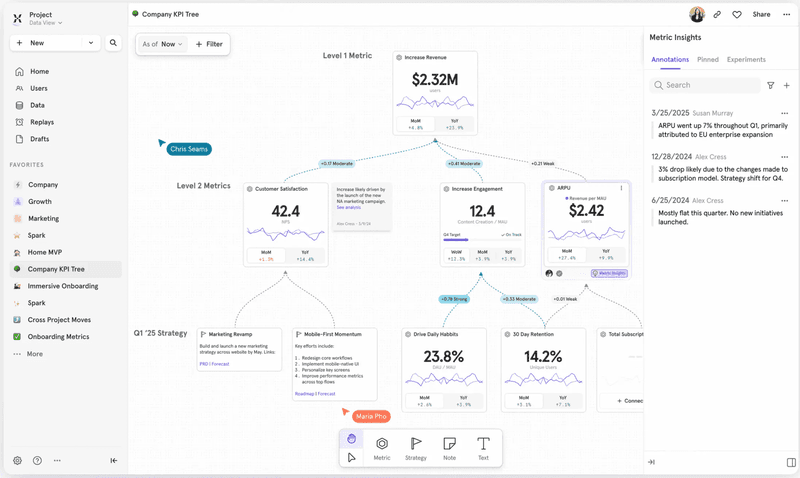
Unlike PostHog, it doesn’t offer built-in A/B testing or feature flags. But I think where Mixpanel makes a difference is how it helps teams take ownership of their metrics. It gives PMs, marketers, and even non-technical users the freedom to explore data, build custom dashboards, and track custom events without always bringing in engineers.
I’ve found it especially useful for keeping everyone aligned. The entire team can speak the same “data language” and move faster on insights.
Mixpanel vs PostHog side-by-side comparison
| Features | Mixpanel | PostHog |
|---|---|---|
| Product analytics | ✔ | ✔ |
| Core charts (funnels, trends, paths, retention cohorts) | ✔ | ✔ |
| Autocapture | ✔ | ✔ |
| Driver/Correlation discovery | ✔ Signal quantifies correlation between a “correlation” event and a goal event. | ✔ Funnel Correlation auto-highlights events/properties that most affect conversion. |
| Launch/Feature impact readout | ✔ | ✖ |
| SQL query | ✔ JQL exists but is in maintenance mode and scheduled for deprecation (Dec 31, 2025) | ✔ |
| Heatmaps | ✔ | ✔ |
| Session replay | ✔ | ✔ |
Why it’s a good PostHog alternative:
If your team loves digging into numbers but hates waiting on engineering, Mixpanel will make life easier. It gives you full ownership of your metrics with a user-friendly interface that makes user segmentation, trend spotting, and conversion tracking feel effortless.
I’ve found it especially handy when multiple teams are involved: product managers, designers, even marketing teams can jump in, explore data, and draw their own conclusions. Compared to PostHog’s heavier setup, Mixpanel feels lighter and more collaborative.
So if you care about understanding the full customer journey, experimenting quickly, and relying on journey mapping to visualize key touchpoints, Mixpanel is for you.
4. Heap – Retroactive analytics via autocapture
Heap carved out its niche by offering automatic data capture, removing the need for extensive upfront instrumentation.
It’s one of the favorite PostHog alternatives for teams focused on user experience and rapid iteration.
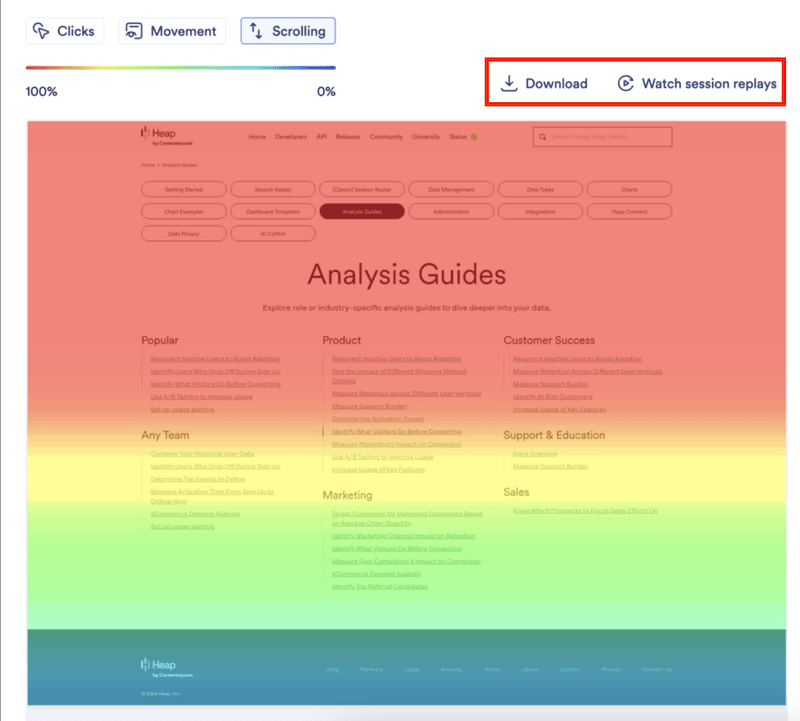
Heap’s main advantage often lies in its fully retroactive data capture and visual tagging, simplifying the initial setup.
And while I know autocapture isn’t unique anymore (PostHog and others have caught up), Heap has been perfecting it since 2013! Its ability to collect and analyze historical user data without setup delays still makes it one of the most reliable analytics tools for catching missed insights.
Heap vs PostHog side-by-side comparison
| Features | Heap | PostHog |
|---|---|---|
| Product analytics | ✔ | ✔ |
| Effort/Friction scoring | ✔ | ✖ |
| SQL queries | ✖ | ✔ |
| Heatmaps ↔ Replay workflow | ✔ Heatmaps with a direct “watch matching session replays” link from results. | ✖ |
| Correlation/ drivers in funnels | ✖ | ✔ |
| Autocapture | ✔ | ✔ |
| Open-source | ✔ Contact support for self-hosted installs | ✔ |
Why it’s a good PostHog alternative:
If you want to jump straight into analyzing behavior without tagging every event, I think Heap is a clear choice. It captures everything users do automatically (clicks, taps, path analysis, user properties, you name it) and lets you explore that data later without needing dev support.
Compared to PostHog, it’s more plug-and-play for smaller teams and non-technical team members who care about qualitative insights and reducing setup friction points.
It’s great when you want fast answers about your product’s analytics capabilities without waiting on engineering or re-instrumentation.
5. LogRocket – Developer-focused analytics and performance monitoring
LogRocket, established in 2016, offers session replay and front-end monitoring with a strong developer slant. It helps software teams debug user issues by combining replays with error tracking and performance monitoring.

You can view network requests, console logs, errors, and user interactions within the context of a session replay. This helps you understand not just what went wrong, but why.
LogRocket vs PostHog side-by-side comparison
| Features | LogRocket | PostHog |
|---|---|---|
| CPU & memory monitoring | ✔ Built-in CPU & memory usage tracking to diagnose spikes/leaks. | ✖ |
| Autocaptured performance + logs | ✔ | ✔ |
| UX frustration signals | ✔ First-class Issues: rage clicks, dead clicks, network errors, etc. | ✔ Rage clicks only |
| Clickmaps and Heatmaps | ✔ | ✔ Heatmaps only |
| Product analytics and core charts | ✔ | ✔ |
Why it’s a good PostHog alternative:
If your main focus is understanding why something broke rather than just what users did, LogRocket is a lifesaver. It combines session replay capabilities with powerful debugging tools, so developers get a clear window into how real user sessions play out before an issue occurs.
One feature I really appreciate is LogRocket’s built-in application performance (CPU and memory) monitoring, something PostHog just doesn’t offer.
It automatically tracks performance spikes and logs them alongside user behavior, so it’s easier to connect technical issues with actual user frustration.
Overall, I’d say LogRocket is a better fit for engineering-heavy teams or small businesses that rely on quick debugging and reliable dedicated support. PostHog, however, is the stronger choice if your goal is broad product analytics or user behavior tracking.
6. FullStory – Digital experience intelligence insights
FullStory excels at digital experience analytics, primarily through powerful session replay and heatmaps. It’s often used by UX researchers and customer support teams to troubleshoot issues and understand user journeys.
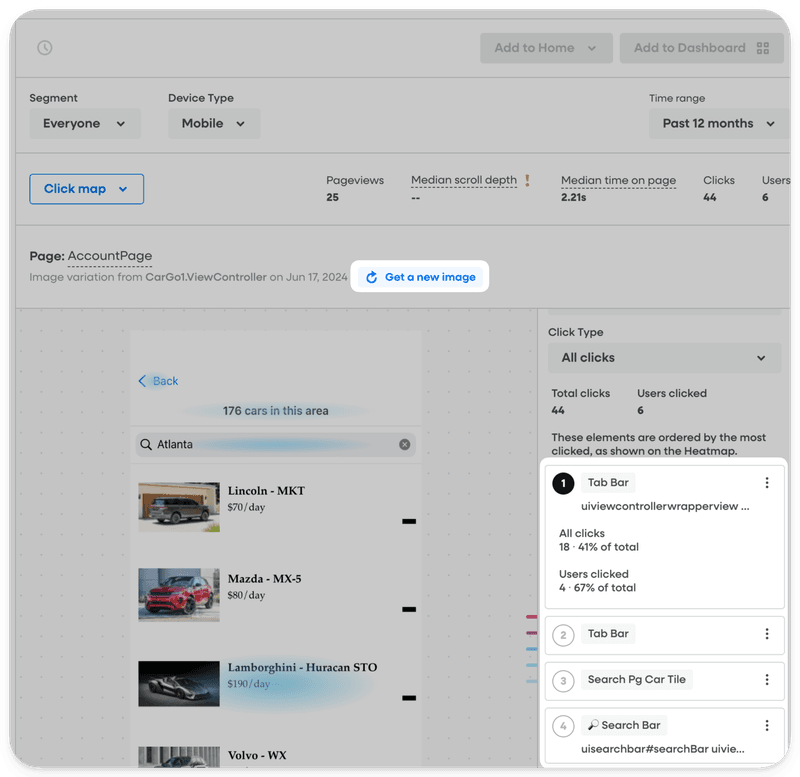
FullStory vs PostHog side-by-side comparison
| Features | FullStory | PostHog |
|---|---|---|
| Product analytics with core charts | ✔ | ✔ |
| Autocapture | ✔ | ✔ |
| Frustration signals as first-class objects | ✔ Built-in Rage/Dead/Error Clicks + Thrashed Cursor; Frustrated Sessions default segment. | ✔ Rage clicks only |
| Heatmaps | ✔ | ✔ |
| Mobile heatmaps and conversion maps | ✔ | ✖ |
| SQL query | ✖ | ✔ |
Why it’s a good PostHog alternative:
If you’re looking at PostHog alternatives that dig deeper into why users struggle, FullStory is the one. I’d call it less of a traditional product analytics tool and more of a digital experience tool.
It shows you exactly where users get stuck through session replays, heatmaps, and frustration signals that PostHog only partly covers.
The key feature here is how it connects event tracking with behavior context. You’re not just seeing numbers, but also how real users experience your web and mobile apps in the moment.
It’s perfect when you need detailed product analytics to fix UX issues fast, without the heavy infrastructure management or steep learning curve that PostHog sometimes brings.
7. Plausible – GDPR-compliant insights for website analytics
Plausible Analytics is a lightweight, open-source web analytics tool focused on providing GDPR-compliant insights. It’s fast, easy to use, and doesn’t rely on cookies, making it a favorite for privacy-conscious website owners.
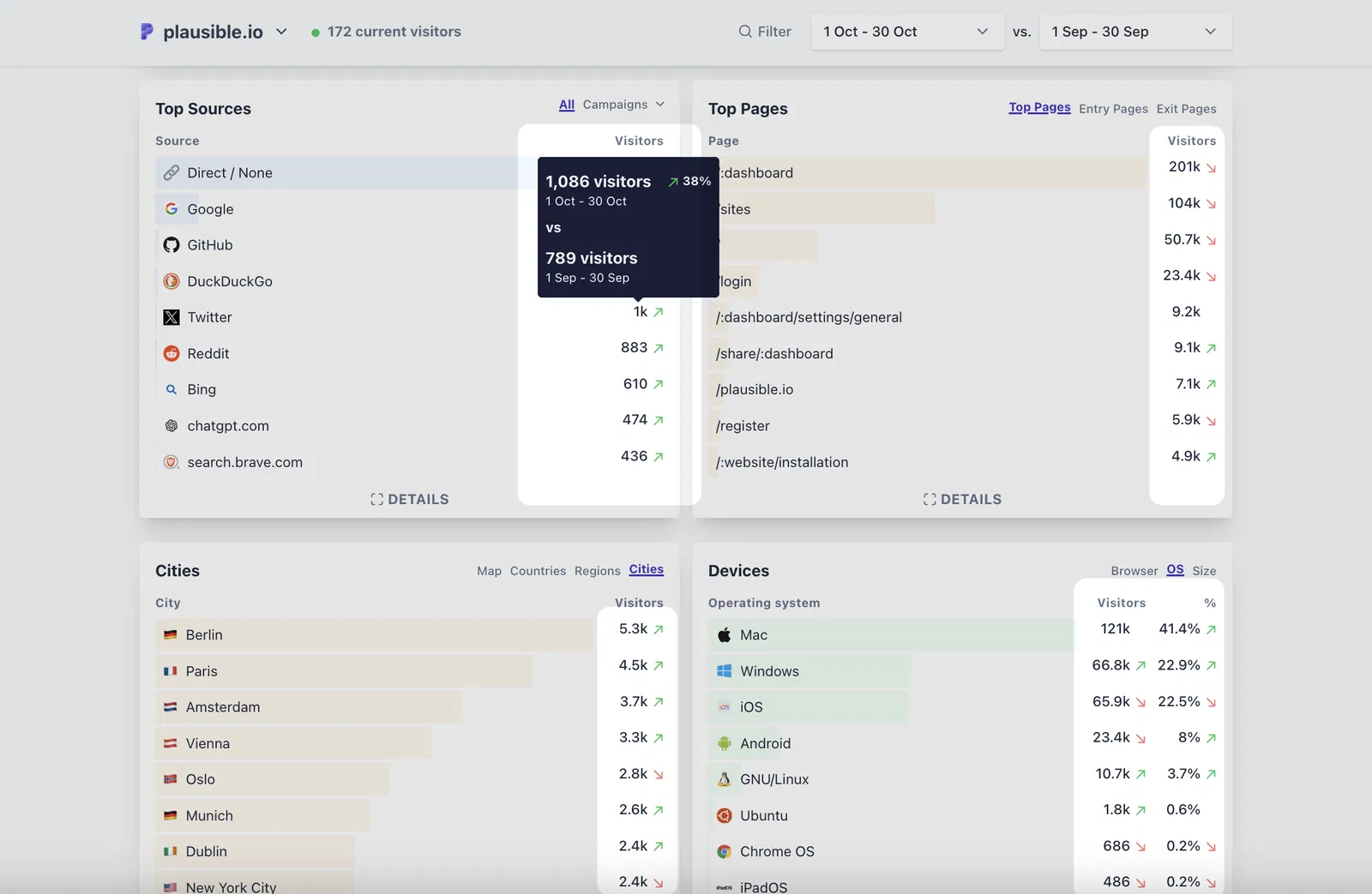
Plausible vs PostHog side-by-side comparison
| Features | Plausible | PostHog |
|---|---|---|
| Web analytics dashboard | ✔ | ✔ |
| Goals/ conversions | ✔ | ✔ |
| UTM/campaign attribution | ✔ | ✔ |
| Self-hosting option | ✔ | ✔ |
| Privacy model | ✔ Cookieless by default | ✔ Optional with an explicit configuration |
| Ultra-light tracking script | ✔ | ✖ |
| Managed first-party proxy to bypass ad blockers | ✔ | ✖ |
| Autocapture | ✖ | ✔ |
| Session replay | ✖ | ✔ |
Why it’s a good PostHog alternative:
If your analytics needs are mostly web-focused, I’d consider Plausible the simpler, cleaner choice. It’s a privacy-focused alternative that gives you all the important insights without tracking personal data or slowing down your site.
Compared to PostHog, it’s also much lighter. You don’t need a complex setup, there’s no steep pricing structure, and no need to manage your own servers. It’d be my pick for teams or small businesses that just want clear automated insights into traffic and conversions without all the extras. Plus, its transparent free plan and cloud version make it one of the most cost-effective product analytics platforms out there.
8. Statsig: Feature flags and experimentation at scale
Statsig is a robust platform focused on enterprise-grade feature flags, A/B testing, and experimentation. It boasts impressive scalability, handling trillions of events daily.

Statsig vs PostHog side-by-side comparison
| Features | Statsig | PostHog |
|---|---|---|
| Product analytics basics (events, funnels, retention, paths, dashboards) | ✔ | ✔ |
| Session replay | ✔ | ✔ |
| Heatmaps | ✔ | ✔ |
| Feature flags | ✔ | ✔ |
| A/B/n experiments | ✔ | ✔ |
| Warehouse-native experimentation | ✔ Run experiment analysis directly on your data warehouse | ✖ |
| Sequential testing (anti-peeking) | ✔ | ✖ |
| SRM checks (traffic split health) | ✔ | ✖ |
| Session replay (native) | ✔ | ✔ |
| Heatmaps (native) | ✔ | ✔ |
| SQL query | ✔ | ✔ |
Why it’s a good PostHog alternative:
If your product is in constant experimentation mode, I’d recommend Statsig over PostHog any day. It’s built for teams that do a ton of feature launches and data validation. I’ve also found its feature management setup far more advanced than what PostHog offers. You can instantly turn any feature flag into an A/B or multivariate test without the usual setup pain.
Also, unlike PostHog’s usage-based pricing model, Statsig’s unlimited flags and tests make scaling easy, especially for product analytics platforms dealing with millions of events. It also combines product analytics with experimentation, so you can track test variations and outcomes in one place.
It’s ideal for engineering teams heavily invested in A/B testing in product management. If a comprehensive product analytics suite with session replay is equally important, then PostHog or Userpilot would be a better choice.
Democratize insights and drive action with Userpilot!
I’ve made recommendations for 8 PostHog alternatives that I tested.
Nevertheless, the best analytics tool is ultimately the one your whole team can use. That’s where Userpilot really stands out. It gives you out-of-the-box product analytics, in-app engagement, and user feedback features that make it easy to understand what users need and act on it right away.
Instead of juggling tools or writing endless SQL queries, you can build experiences, collect insights, and measure impact all in one place. It’s everything you need to drive adoption, retention, and growth, but without the technical overhead.
If you’re ready to work with data that leads to actual action, book a Userpilot demo today and see how it feels to finally have product insights that work for you.

